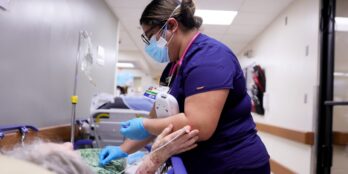
COVID-19: Lessons Learned & Room Left to Grow
 3 min
3 min
Long-term and post-acute care providers have been caught in the crosshairs of the Coronavirus. As of the end of November, more than 331,904 residents of U.S. nursing homes had contracted COVID-19 and tragically, over 69,872 of those cases resulted in deaths.
When we first wrote about the novel Coronavirus back in March, we shared some broad steps that care providers could take to minimize exposure and risk, including:
- Stay connected to local and national health authorities for status updates and response guidelines.
- Remain vigilant when it comes to staff and visitors who represent the highest risk for introduction, including implementing screening tools.
- Closely monitor residents/ patients for symptoms and changes in condition.
Eight months later, we have a lot more knowledge about the specifics of infection control in long-term care facilities and particularly for skilled nursing facilities (SNFs). The Centers for Disease Control and Prevention (CDC) have a core set of practices they recommend, which include:
- Consistently educate residents, healthcare personnel and visitors about COVID-19, current precautions being taken at the facility, and actions they should take to protect themselves.
- Implement visitor restrictions and encourage alternate methods for visitation (e.g., video conferencing).
- Identify space in the facility that can be dedicated to monitor and care for residents with COVID-19.
- Develop a process for regularly testing residents and healthcare personnel.
- Evaluate and manage healthcare workers by implementing flexible sick leave policies, screenings at the beginning of every shift, and asking staff to regularly monitor themselves.
- Provide the supplies necessary to adhere to infection control practices including hand hygiene supplies, tissues, trash cans, and personal protective equipment (PPE).
Over the course of the pandemic, long-term care facilities have developed better approaches to isolation and monitoring, testing, use of PPE, and leveraging technology to ensure residents can stay in touch with loved ones. But we aren’t finished yet and there is a lot of work left to be done. While healthcare providers have made incredible strides in controlling the spread of the virus, they simply need more support.
The Coronavirus exposed cracks in the current system of providing and funding long-term care. What we need moving forward are high-level structural changes that – when distilled down – truly empower nurses and provide them with the information and tools they need to perform at their best. With the right protocols, processes and strategies in place, caregivers can deliver the best possible outcomes for each patient and ultimately, for the facility as a whole.
December 15, 2020






